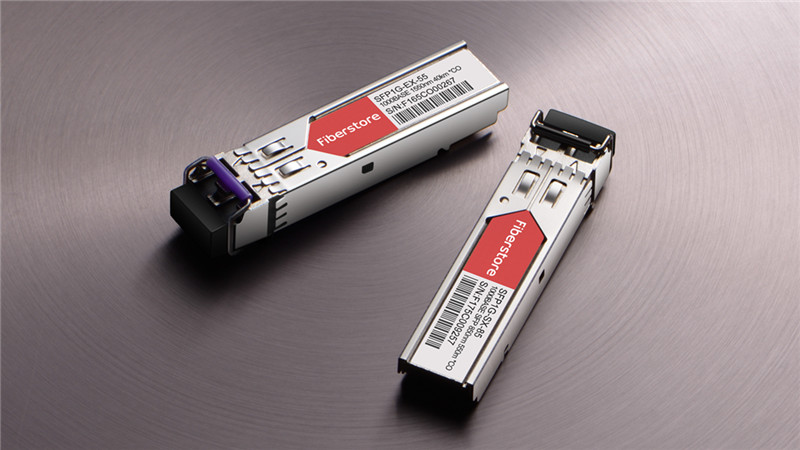Things You Should Know About SFP Transceiver
Figure 1: Examples of SFP transceiver.
SFP Transceiver Introduction
SFP module, also called as small form-factor pluggable or mini GBIC (gigabit interface converter), is a compact, hot-pluggable optical transceiver module. It’s designed to support Fibre Channel, Gigabit Ethernet and other communication standards. SFP modules are used in network switches, routers or network interface cards, supporting different speeds such as 2G, 4G or even more.
Types of SFP Transceiver
SFP transceiver module comes in various types on the basis of different classification standards. Basically, SFP transceiver is divided into fiber SFP and copper SFP types according to the different cable types, optical fibers and copper cables, such as 1000BASE-LX/LH SFP transceiver module and 10/100/1000BASE-T copper RJ45 transceiver module. The transmission rate of SFP module is available from 100Mbps up to 1000Mbps or more. Working distance of these SFP transceiver modules can be from 500 meters to 100 kilometers. Usually, SFP modules are used to connect network switches and other network devices via a fiber or copper network cable.
Considerations When Choosing a Third-party SFP Module
When it comes to buying SFP modules, most enterprises and individual users would like to use third-party transceiver modules, because they are more money-saving based on the same quality as the OEM optical transceivers. However, on the market, there are lots of SFP modules made by various vendors. And how can we choose one with good quality? The following are some factors that you must take into account.
Figure 2: Before buying an SFP transceiver, we should we consider?
- Compatibility
Compatibility is always the most important factor. Before place your order, make sure that the data rate, transmission distance and wavelength of the SFP module can be compatible with your networking devices. If you are uncertain which cables or other equipment you are utilizing, just ask the sales for details about the SFP transceiver compatibility.
- Quality and After-Sale Service
Nobody can ensure the SFP modules received are 100% normal. It’s wise to buy transceivers from a vendor that offers longer service and support terms into the deal. Thus, you can enjoy a better technical support and service for your products.
- Price
Price means a lot when buying anything. Compared with Cisco SFP or other brand SFP modules, third party SFP optical transceivers are more cost-effective. Usually, there is no difference between the performance of compatible 1G SFP and OEM SFP modules except for the price. Users can compare the prices of several third-party vendors. Then they can choose the right compatible SFP optical transceiver from a reliable vendors according to their need with a cheap price.
Therefore, buying a transceiver from a reputable source, there’s simply no good reason to fear them somehow causing harm. It’s simple, standardized, reliable technology no matter who the manufacturer is. As long as you pick a reliable vendor, third-party transceivers will work just as well as first-party.
FAQ That You May Concern
Is there any differences between SFP and SFP+?
Visually, SFP and SFP+ have the same size and appearance. The main difference is the application. SFP is used for 100Base or 1000Base applications, while the SFP+ is applied in Gigabit Ethernet network. And the data rate and transmission distance of them are also different. For example, SFP supports speed up to 4Gbps Fibre Channel transceiver, while the speed of SFP+ transceiver is up to 10.3125Gbps.
- Can we use SFP hardware in SFP+ slots?
As a general rule of thumb, SFPs will work in SFP+ slot, but SFP+ optics do not work in SFP slots. Note that, when you insert SFP module in SFP+ slot, the speed of the port only can be up to 1G not the 10G. Besides, SFP+ optics cannot be plugged into SFP port, because SFP+ does not support speed under 1G. Though it’s feasible often, for security reasons, it’s suggested to ask your product vendor for some detail information.
Conclusion
SFP transceiver is the linking modules applied in base station, switch, optical network card and so on. FS, the leading supplier of fiber communication industry, will serve customers with good quality and service. Any question about SFP transceiver modules, please let us know and feel free to contact us via sales@fs.com.



评论
发表评论